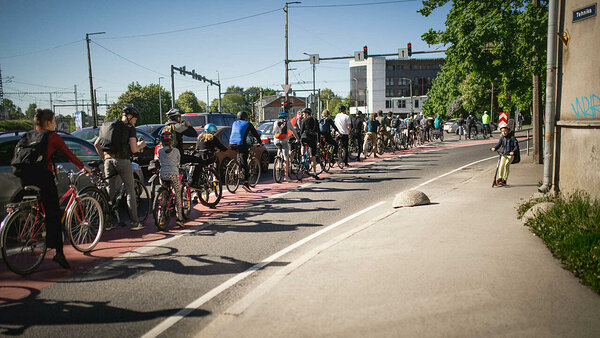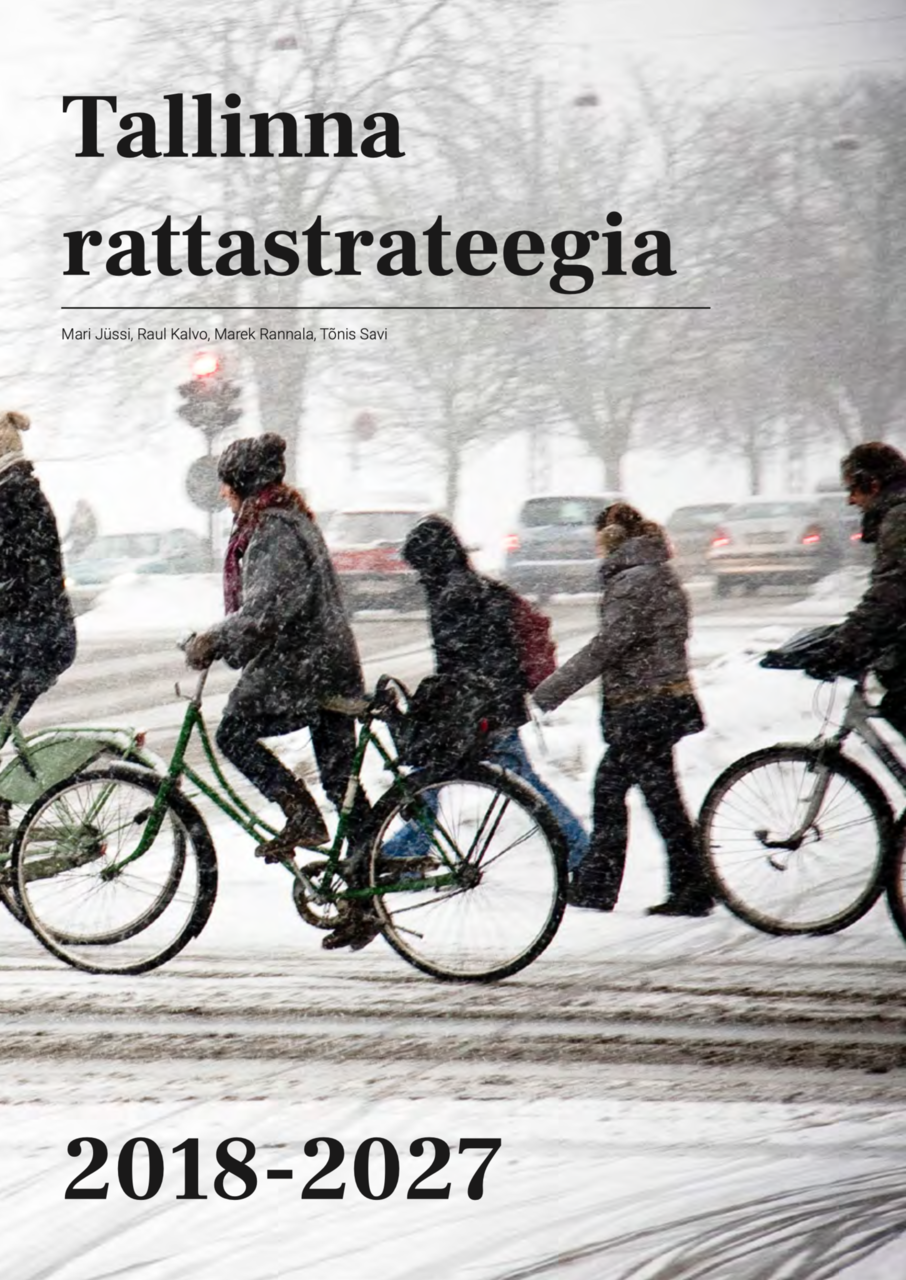WHAT PRACTICAL PROBLEM IS SOLVED WITH BIKE PATHS?
Safe bike paths and a quality urban space are among the most critical issues of this year’s local government elections.
No city can accommodate everyone’s cars. Well-organized bicycle traffic, however, would benefit everyone. Each person opting to travel by bike means fewer cars on the road, which in turn provides for improved car traffic flow.
Following the example set by other Nordic cities, 10-20 per cent of traffic in Tallinn could also be on bike — and all year round. This would require political will — which, in turn, is up to voters.
More people opting to bike on a daily basis would mean:
- Improved quality of life, including improved physical and mental public health;
- Residents having improved mobility — including faster, more convenient, healthier, more diverse and cheaper options for getting around — without having to rely on a personal car;
- Improved car traffic flows due to reduced numbers of vehicles on the road;
- Increased employee productivity, as daily movement helps keep people healthy, in turn reducing the amount of sick days taken from work; talent will be easier to attract and retain, as offices will no longer be located on deserted roads, but lively streets;
- Increased turnover for businesses, as there are more people on the street shopping or consuming services, as has been shown to be the case in other cities;
- More affordable real estate, as developers would not have to include additional parking spaces for each new apartment that buyers are forced to purchase for five-figure amounts even if they do not own a car;
- People with mobility impairments would no longer be trapped at home: safer and smoother roads would mean improved independent mobility for the less able people as well;
- Independent mobility for children: kids would no longer have to rely on their parents playing taxi driver between school, sports practice and home, as their urban space is safe.
THE SOLUTION
The key to a safer urban space and smooth traffic flows for everyone lies in the implementation of the Tallinn Bicycle Strategy 2018-2028 under the consultation of the authors of the strategy, in order to ensure that international best practices are adhered to in the design of the city’s bike paths.
Many
solutions could be implemented quickly and simply. For example, throughout the
city, curbs could be levelled, bollards installed along cycle tracks, and speed
limits limited to 30 km/h on roads where cycle tracks are not protected from
vehicles.
Funding for all of this exists.
Estonia is set to receive over €4.5 billion in EU structural funds (link in Estonian) soon, much of which has been earmarked for the construction of cycle paths. It will be the job of the city government and city council to utilize this money and vote in favour of the allocation of these funds in the municipal budget as well as in favour of the Tallinn Bicycle Strategy action plan.
The city’s streets aren’t currently safe for people. There isn’t enough room anymore — for cars or for bikes. Bikes and electric scooters threaten people’s safety on sidewalks; there isn’t enough parking for cars; you cannot buy an apartment without a designated parking space, even if you don’t intend to drive a car.
Businesses languish when streets are poorly designed — take the stretch of Pärnu manatee between Vabaduse square and Hariduse street, for example. The City of Tallinn is forcing everyone to travel by car — but the city just can’t accommodate all of these vehicles. Parents have no choice but to drive their kids around because they are afraid to send their children out on their own; others have to spend more time tied up in traffic as a result.
We
need a paradigm shift.

